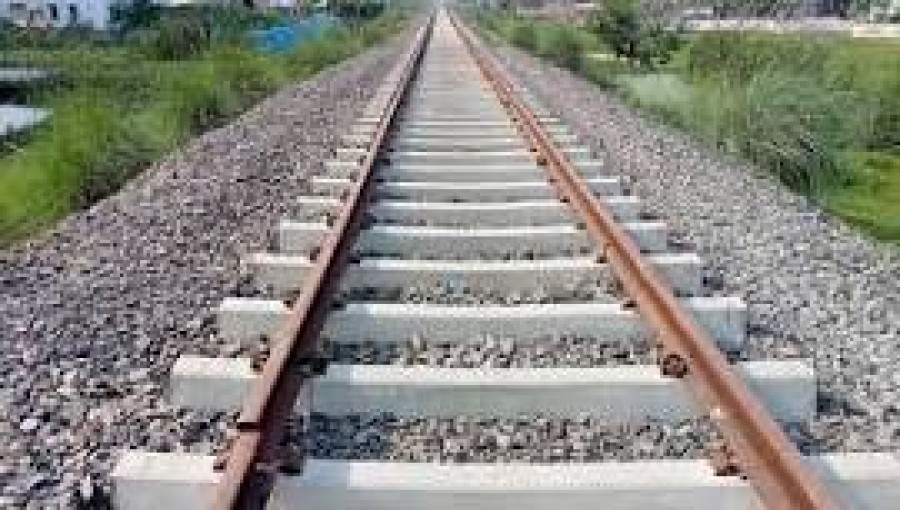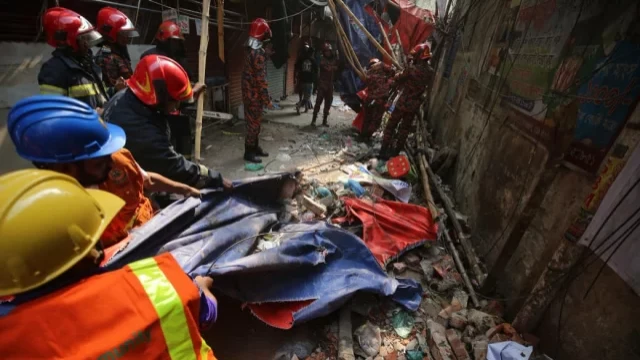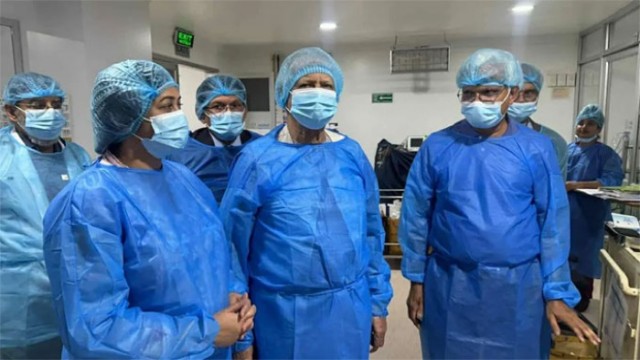The extreme heat makes it dangerous to bend the railway line. As a result, trains on Bangladesh Railway's western segment are moving slowly. As a result, no train's timetable is accurate.
Railways states that the western area has 2,286 kilometres of railways. Only the Rajbari-Dhaka and Dhaka-Chilahati-Panchgarh sections have concrete sleepers. Additionally, the Ishwardi-Khulna route has steel sleepers. The remaining sleepers are made of wood and are around fifty years old. Concrete sleepers are occasionally positioned next to it. Wooden slippers, however, are more.
These wooden sleepers prevented the train from moving quickly over shaky rails. The heat wave that is still continuing strong might cause these railway lines to bend.
Train almost survives: On Friday, April 26, the Kapotaksh Express, an intercity train from Khulna headed for Rajshahi, hardly missed a catastrophic catastrophe when the railway line gave way at the Bypass Railway Station in Ishwardi, Pabna. The train carrying the Kapotaksh Express, which was departing from Khulna via the curved railway line, was halted and redirected via the Ishwardi Locomotive railway route.
After about an hour, the train departed for Rajshahi on a different line. Subsequently, in an effort to lower the temperature and restore normalcy to the bent railway track, authorities from the railway office splashed water on the track for two hours.
A railway worker at the Railways' Ishwardi Bypass Station, Shubo Hossain, said that from a distance, the railway line on which the Kapotaksh train was approaching Ishwardi Bypass Station seemed to be crooked. The train was departing from Ishwardi Station. After learning of the event, the assistant engineer, the divisional railway's transport officer, and other authorities arrived on the scene without delay.
The station master of Ishwardi Bypass Station, Taulad Hossain, commented that the extreme heat wave appeared to have twisted the railway line. That line was being used at the time by the intercity Kapotaksh Express train from Khulna to Rajshahi.
At that moment, the train was stopped. Later on, it took a different line to Rajshahi. Additionally, he added that once the railway office staff sprayed water on the railway line to lower the temperature, the track returned to normal.
Anwar Hossain, the commercial officer for Pakshi Divisional Railway, stated that as soon as he heard the news, Divisional Senior Assistant Engineer Bakia Tullah and other authorities went to the location, removed the train off the line, and attempted to travel to Rajshahi via a different line. The event was verified by Shah Sufi Noor Mohammad, the Divisional Railway Manager (DRM) of Pakshi.
Unusable wooden slippers that have decayed: The residents of Rajshahi's Adani neighbourhood in Baghar are aware that a large number of the wooden footwear there have rotted. There are not enough stones, which makes the slipper shaky. Furthermore, there is movement in the nut-bolt and clip.
There's fading on this ancient slipper. This danger is what keeps the train moving. The same condition of sleeper was observed on the railway line even after travelling to the Harian region of Paba Upchela in Rajshahi. The locals claimed that the railway lines in these locations have not received significant upgrades in a very long time.
When train derails or nut-bolts fall loose, repairs are necessary.
According to Western Railway Chief Engineer Asadul Haque, "In 1973, the railway line was laid from Rajshahi to Abdulpur." A railway line should last 20 to 25 years, on average. How old is this sleeper, and the railway has reached the 50-year mark? You must thus use caution when operating the train.
Because of the intense heat wave, there is a significant chance that the wooden slipper's lines may bend. He therefore asserts that routine maintenance is being performed.
"I am lying in the field day and night along with two senior assistant engineers to keep train movement normal on the expired unused sleeper," stated Abu Zafar, an assistant engineer from Rajshahi.
In certain spots, sleepers and railroads break every day.
Whether it's forty or fifty degrees Celsius, it makes no difference to us. We've sent out a heat alarm, similar to notifying uncle about Nana's house. Along with my coworkers, I maintain railway lines day and night. Authorities directed trains to move slowly: According to railway authorities, the intense heat on Thursday, 25 April, caused a train on the Ishwardi-Bypass railway line to bend.
As a result, from 12 p.m. to 4 p.m., train traffic is suspended on this 4-kilometer railway track. The train is told to travel on this line at a speed of 40 kmph due to the hazard.
A few days ago, the train speed on the Darshana-Jesore railway line was lowered to 60 km/h out of concern about the line's bending. On this line, trains are still run cautiously.
The Western Railway's Additional Chief Engineer, Ahsan Jabir, stated that excessive heat or cold causes the line to bend or break. The train travels at a slower pace on certain lines. 'Rail breaking' and 'buckling' (line bending) result from the line being stretched and distorted by the heat or winter.
The railways will follow a set of guidelines in this scenario. The train has now been operated as a result. There is also ongoing maintenance.
According to Western Railway General Manager Asim Kumar Talukder, the temperature on the railway line is consistently seven to eight degrees Celsius higher than the ambient temperature. Extreme heat waves might cause the timber sleeper area to bend. However, there are currently no significant issues. In Ishwardi, maintenance was already underway.
That's where the railway line bends, later fixed.
Additionally, Asim Kumar Talukder stated that concrete sleepers have a high load capacity. The line bends, but not at all, even at 50 degrees Celsius. When using wooden sleepers, such is not achievable. I had to add steel and wooden sleepers on the main line because there weren't enough sleepers.
As we transition, we are currently attempting to construct concrete sleepers. It's preferable if you can do the task right away. The likelihood of railway lines bending will then decrease. Additionally, trains can operate quickly.
End/v7n/rar/sma/dk/































Comment: